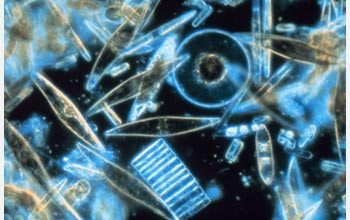
For other UW La Crosse organismal biology students websites check at http://bioweb.uwlax.edu/bio203/.
Diatoms are unicellular protists that
consist of an estimated 200,000 species. They live mostly
individually but in a few species they are form chains. Almost
all are able to undergo photosynthesis, with only a few scarce
exceptions. They are so prevalent and dominate in global
ecosystems that they contribute an estimated 20 to 25 percent of
the net global primary production.
Diatoms are a relatively well studied species because of a
key feature that they posses, which is their silica cell wall
(frustules), which are considered beautiful. They were also once
used to determine the quality of microscope lenses.
Diatoms have two general orientations for their frustules: Pennale, which are bilaterally symmetrical, and Centrale, which are radial symmetrical. Their frustules are also composed of two part which are often compared a Petri dish because the top part, or valve, of the frustules is larger and has a slight over hang over of the bottom valve. They also often have ornate pores, spikes and other things in them that assist in protection from predation and nutrient transport, in and out of the cell; as well as, their classification, because the structures are specie specific. (For more on the frustules go to facts)